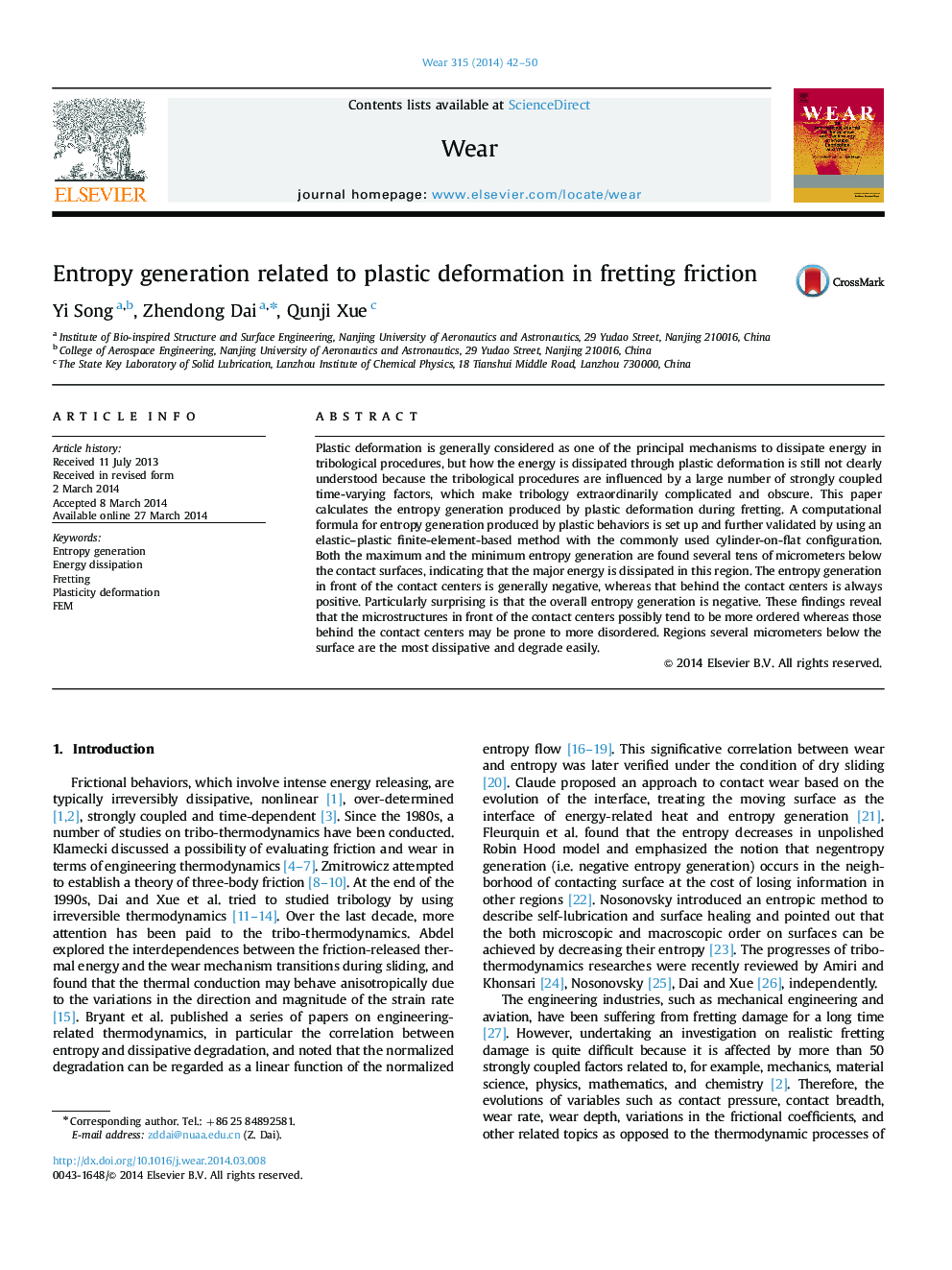| Article ID | Journal | Published Year | Pages | File Type |
|---|---|---|---|---|
| 617410 | Wear | 2014 | 9 Pages |
Abstract
Plastic deformation is generally considered as one of the principal mechanisms to dissipate energy in tribological procedures, but how the energy is dissipated through plastic deformation is still not clearly understood because the tribological procedures are influenced by a large number of strongly coupled time-varying factors, which make tribology extraordinarily complicated and obscure. This paper calculates the entropy generation produced by plastic deformation during fretting. A computational formula for entropy generation produced by plastic behaviors is set up and further validated by using an elastic-plastic finite-element-based method with the commonly used cylinder-on-flat configuration. Both the maximum and the minimum entropy generation are found several tens of micrometers below the contact surfaces, indicating that the major energy is dissipated in this region. The entropy generation in front of the contact centers is generally negative, whereas that behind the contact centers is always positive. Particularly surprising is that the overall entropy generation is negative. These findings reveal that the microstructures in front of the contact centers possibly tend to be more ordered whereas those behind the contact centers may be prone to more disordered. Regions several micrometers below the surface are the most dissipative and degrade easily.
Related Topics
Physical Sciences and Engineering
Chemical Engineering
Colloid and Surface Chemistry
Authors
Yi Song, Zhendong Dai, Qunji Xue,
